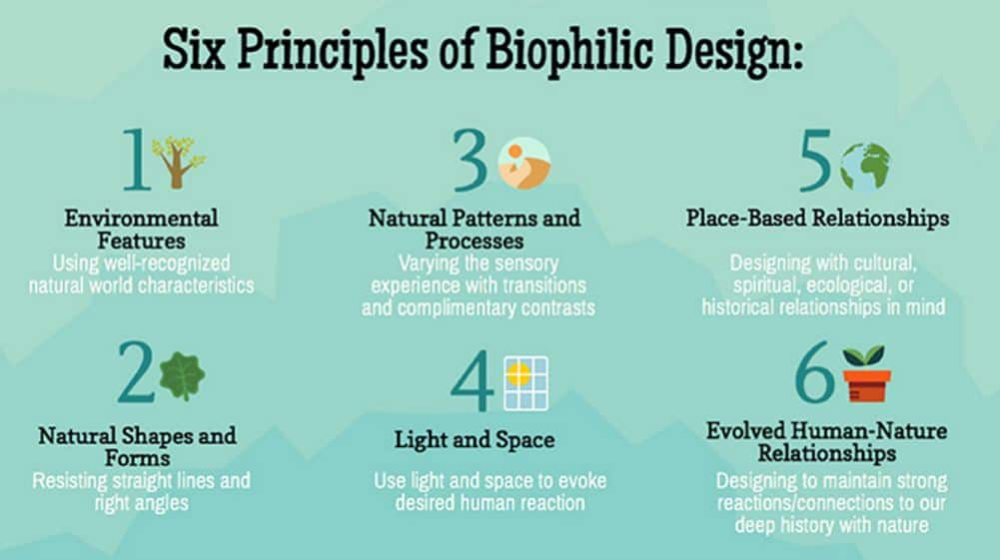What Role Does Architecture Play In Promoting Biophilic Design Principles?

Are you looking to bring a little more nature into your home? If so, you may want to consider incorporating biophilic design principles into your space. Biophilic design is all about creating spaces that connect people with nature, and it can have a wide range of benefits.
What is Biophilic Design?
Biophilic design is a concept that has been around for decades, but has gained popularity in recent years as more people have become interested in sustainability and eco-friendly living. The idea behind biophilic design is that humans have an innate connection to nature, and that incorporating natural elements into our built environment can have a positive impact on our health and well-being.
There are many different ways to incorporate biophilic design principles into a space. Some common elements include:
- Natural light
- Plants and greenery
- Natural materials like wood and stone
- Views of nature
- Water features
Benefits of Biophilic Design
There are many reasons why you might want to incorporate biophilic design principles into your home or office. Some of the key benefits include:
Improved health and well-being
Studies have shown that exposure to nature has a positive impact on our physical and mental health. For example, research has found that spending time in nature can lower blood pressure, reduce stress, and improve mood.
Increased productivity and creativity
Not only can biophilic design have a positive impact on our health, it can also boost productivity and creativity. Some research has found that having plants in the workplace can improve productivity and reduce absenteeism. Other studies have found that exposure to nature can boost creativity and improve problem-solving skills.
Better air quality
Many indoor environments suffer from poor air quality, which can lead to a range of health problems. Incorporating plants into a space can improve air quality by removing pollutants and increasing oxygen levels.
Lower energy costs
Incorporating natural elements into a space can also help reduce energy costs. For example, strategically placing trees and plants around a building can help shade it from the sun, reducing the need for air conditioning.
How to Incorporate Biophilic Design Principles into Your Home
If you're interested in incorporating biophilic design principles into your home, there are many different approaches you can take. Here are some ideas to get you started:
Add Indoor Plants
One of the easiest ways to bring nature into your home is by adding indoor plants. Not only do plants look great, they also help purify the air and can create a calming atmosphere.
Use Natural Materials
When choosing materials for your home, consider using natural materials like wood and stone. These materials can create a warm and inviting atmosphere, and can also help regulate temperature and reduce noise.
Incorporate Water Features
Water features like fountains or indoor ponds can be a great way to add a calming element to your space.
Add Natural Light
If possible, try to incorporate natural light into your space. This can help regulate your circadian rhythm and improve your mood.
Bring in Views of Nature
If you have a great view from your home, try to make the most of it by arranging your furniture to take advantage of the scenery. If you don't have a great view, consider adding a nature-inspired mural or artwork to your space.
Create a Green Roof
If you have a flat roof, consider converting it into a green roof. This involves adding soil and plants to the roof, which can provide insulation and reduce energy costs.
Consider Building Around Existing Trees
If you're building a new home or renovating an existing one, think about incorporating existing trees into your design. Not only can trees provide shade and reduce energy costs, they can also create a beautiful and natural atmosphere.
FAQ
What is biophilic design?
Biophilic design is a concept that involves incorporating natural elements into our built environment in order to create spaces that connect people with nature.
What are the benefits of biophilic design?
Some of the key benefits of biophilic design include improved health and well-being, increased productivity and creativity, better air quality, and lower energy costs.
How can I incorporate biophilic design principles into my home?
Some simple ways to incorporate biophilic design principles into your home include adding indoor plants, using natural materials, incorporating water features, and bringing in views of nature.
What are some examples of biophilic design?
Examples of biophilic design elements include natural light, plants and greenery, natural materials like wood and stone, views of nature, and water features.
Does biophilic design have any scientific backing?
Yes! There is a growing body of research that supports the many benefits of biophilic design.
There are many different ways to incorporate biophilic design principles into your home or office. Whether you choose to add indoor plants, use natural materials, or create a green roof, the important thing is to create a space that connects you with nature and helps improve your health, well-being, and productivity.



Post a Comment for "What Role Does Architecture Play In Promoting Biophilic Design Principles?"